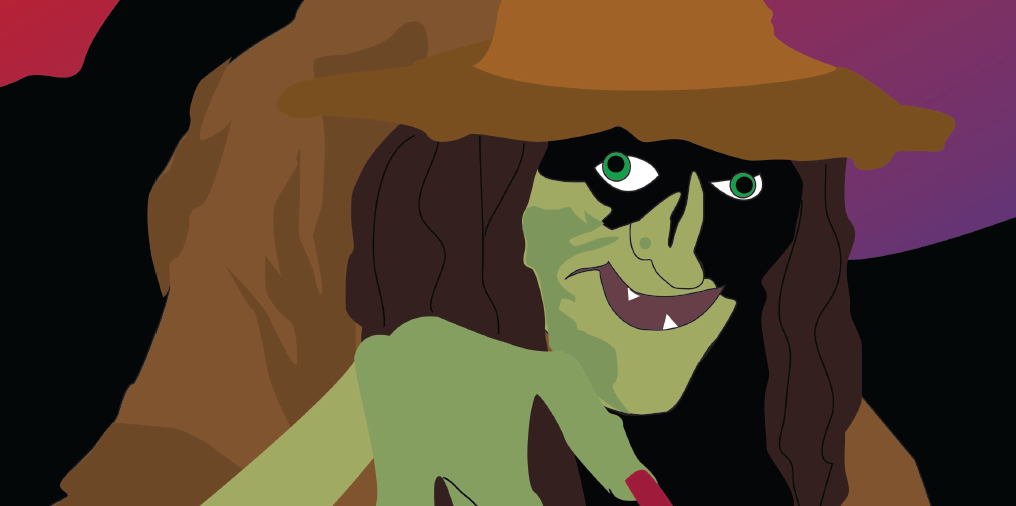Our spooky holiday traditions come from centuries of history. From Jack-o’-lanterns to witches, Kyle McCoy digs into the heart of Halloween.
Throughout our childhoods there was one day every year, October 31st, when we dressed up as ghosts and witches, princesses and pop stars, Power Rangers and Ninja Turtles. We ran feverishly through the night, heeded by the calls of our parents to slow down and watch out for cars as we meandered about neighboring streets on a quest for the heaviest sack of candy – one that might last us to the holiday season, if only what remained was the less desirable remnants of each sugary stash.
While the costume brainstorming began on the first of October and the pumpkins were carved while the parties went underway, we spent little time in our youthful bliss questioning how these strange traditions came about, the ones which shape our modern mid-Fall Halloween holiday. Where did the Jack-o’-lantern come from? What is the history behind that traditional witch costume, the one our teachers and mothers were ever so fond of? Why do we wear costumes at all? Well, this curious cat hopped on the History Channel’s website, History.com, to dredge up some answers.
In an article that posed a question about the tale of the Jack-o’-lantern, I discerned that the carved pumpkins glowing through candlelight placed out on our front steps each year have an Irish origin in Celtic folklore. The story goes that our original Jack, referred to as “Stingy Jack”, tricked the devil not once but twice. Out to a drink with Satan, Jack insisted on not paying for the drinks – convincing the devil to turn into a coin with which Jack was intended to pay. But Stingy Jack opted to keep the coin, placing it in his pocket alongside a silver cross that kept the devil frozen in coin form. Jack only then released the devil from his metal confines when that notorious emperor of evil obliged Jack’s wish to be left alone (meaning his soul unclaimed) for an entire year. But when a year had passed, Jack tricked the devil again when convincing him to climb a tree to claim its fruit while Jack carved a cross in the tree so the devil could not climb back down. This time, Stingy Jack got ten years out of his bargain.
Through the course of those ten years, Jack’s time came naturally and his life ended. God would not let such an underhanded, devious individual into heaven and the devil kept his word not to claim Jack’s soul either, sending him off with but a lump of burning coal. Thus Jack was banished from the Christian afterlife, his soul left to wander the earth and his journey lit by the devil’s coal. He was later nicknamed “Jack of the Lantern” for placing the coal in a carved out turnip as the lantern he used to light his eternal wandering. People began making their own lanterns similar to Jack’s in order to fend off his evil spirit and others alike. This is why today we carve out pumpkins, a gourd native to the Americas, in a similar fashion meant to ward off the evils awoken on Halloween.
Then there is the question of witches. We are all familiar with the stories and history of the Salem Witch Trials. A video on History.com enlightened me with some facts and notables about what makes dressing up as a witch so traditional. Witch comes from the word “wicca” meaning witchcraft. Dating centuries back, witches were considered very troublesome by the Christian community, particularly given that witches were known to be the embodiment of evil – gruesome, violent hags. Healers were seen as heretics and heretics allied with the devil. For this reason they were put on trial, sentenced, and hanged or burnt alive. The chaos surrounding what constituted a witch (that was defined most specifically as unruly feminine power) is what carried such a weighted fear around the unholy beings. Alongside ghosts and evil spirits, witches were a dominant force not to reckon with when Halloween rolled around.
But Halloween was not always called Halloween. It was originally named “All Hallow’s Eve” by the Christian Irish community, meant to commemorate past saints on a day when the living and deceased worlds would collide. It was believed that the spirits of the dead, both good and evil, visited our living realm for that one day. Hence they would celebrate the return of the good by way of rejoicing and fend off the evil by means of dressing up – disguised in costume so as to fool and scare away any nasty risen souls. These were the stepping-stones to our modern day rituals of celebratory gorging on sweets and dressing in character.
Although we’ve outgrown the tradition of trick-or-treating (or for those that haven’t, it’s creepy when 20-somethings try) we are still charged with this energy to dress up and celebrate with our friends or colleagues once Halloween greets us each fall. When you pass by Jack-o’-lanterns and see your teachers dressed up as witches this year, you can drop an informative and nerdy historical fact pertaining to the cause behind such customs. Or maybe don’t bother because The Sandspur beat you to it. Either way, be safe and party hard! Good luck making it to those pesky Friday classes.







Be First to Comment